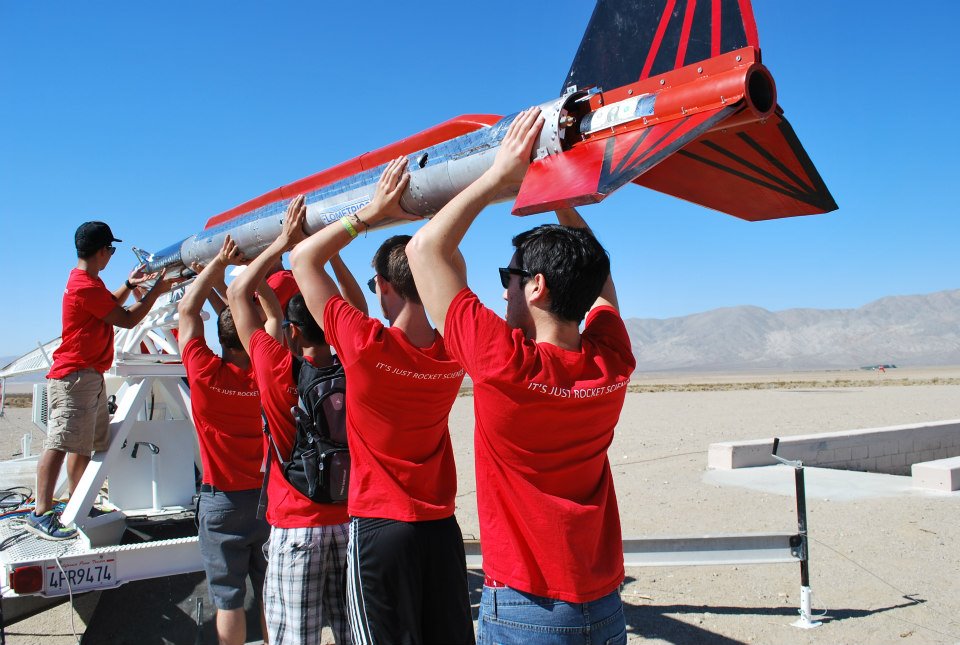Rocketeers
A student-built rocket reached 10,000 feet with a top speed of 600 mph.

As he screwed the final bolt onto the 18-foot rocket in the middle of the Mojave Desert, Alex Weiss was overcome with a sense of fulfillment.
The culmination of two years of hard work, dedication and growth by the members of SDSU Rocket Project had built to this moment, embodied in a rocket that was finally complete and ready for launch.
Weiss, an aerospace engineering junior, heads SDSU’s Rocket Project, a student initiative to design, create and test liquid-fueled rockets.
“Standing there for the countdown was probably the scariest part of it all," said Weiss, recalling the late-October launch. “Hoping the rocket would actually ignite and not just explode off the test stand.”
3...2...1... launch
With more than 50 students, family and professionals from the aerospace industry in attendance, the SDSU rocket soared at 600 mph to a peak altitude of 10,000 feet.
“We want to do some things that have never been done before, even by NASA, and I believe we can.”
“Seeing the rocket actually launch was kind of like Christmas morning,” Weiss said. “It was just a great feeling of getting what I wanted, what everyone wanted — a successful launch.”
Reviving the rocket project
The SDSU Rocket Project launched in 2003 by a group of aerospace engineering students, which included alumni Brandon Florow and Joey Brown who are currently working on the Mars Rover Project in NASA’s Jet Propulsion Lab.
With the help of local aerospace engineering company Flometrics Inc., the project successfully launched several rockets, but interest and student involvement wavered over the years.
“After 2007, the rocket projects withered a little bit,” said Carl Tedesco, project advisor and an aerospace engineer at Flometrics Inc. “But recently it was picked up by Alex and several motivated students, and here we are again.”
The rocket reborn
The students turned a shell of a rocket from 2008 into a functional rocket in less than two years.
"Everyone got really excited to actually accomplish something, to have that hands-on experience and build something that was going to fly,” Weiss said.
“We want to do some things that have never been done before, even by NASA, and I believe we can.”
Now 45 students are working on the project.
“These guys are learning how to turn wrenches, how to pick fittings and all sorts of stuff you just don’t learn in a textbook,” said Tedesco, who earned his undergraduate and graduate engineering degrees from SDSU. “This project is really valuable in helping students get where they want to be."
The students are already working on a lighter, faster and more structurally sound rocket.
They plan to make the next rocket out of carbon fiber, which would make it a third of the weight of the last one, with the potential for more thrust.
They are also exploring the use of "green fuels," such as ethanol from blue algae or corn, and the potential of using a 3-D metal printer to create the motor.

“These students are ambitious,” Tedesco said. “We want to do some things that have never been done before, even by NASA, and I believe we can.”



